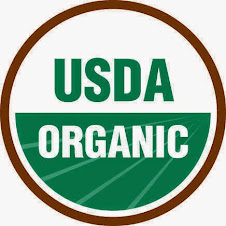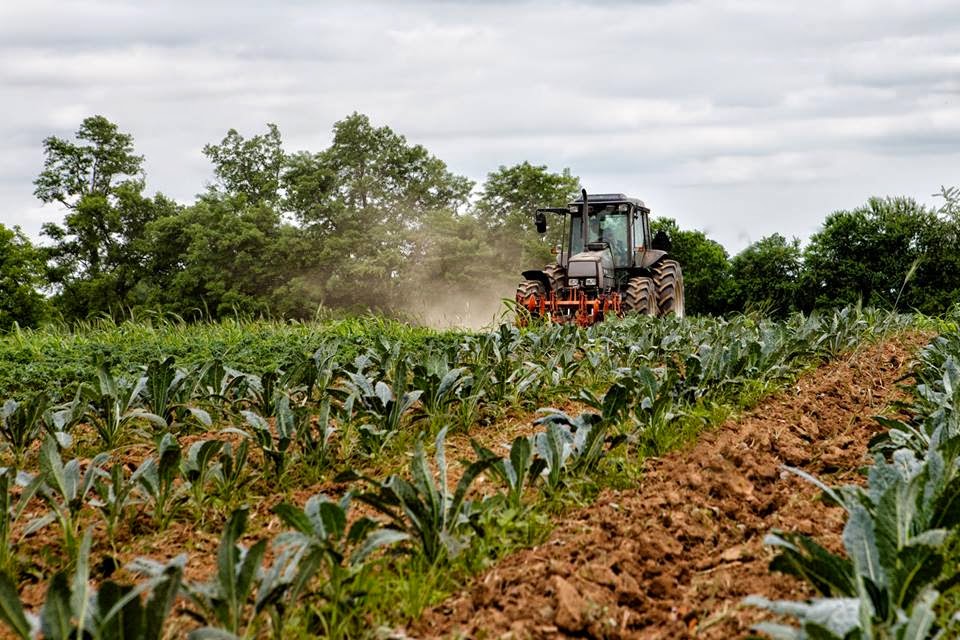
What's In a Name?
Often we are asked questions at the farmers market about organic, or what does sustainably grown mean, or what is all-natural? Does grass fed mean no grain was fed, but aren’t weed seeds considered grain? There are many terms in food marketing to describe production principles, sometimes even willful intention to confuse the public and throw the scent off your understanding. So let’s try to clear some of this up.
Organic is owned by the USDA and denotes a strict set of guidelines, that are overseen by a 15 member Board, administered by a certification agency, with third party inspections for verification. This is a thorough and tedious process that involves verification of every input and an audit process. Only producers, stores or products that are certified organic can legally use the word as a descriptor.
Sustainably Grown- This means the farm or processor decides what they consider sustainable and make you think it is almost organic. Who knows?
Natural- USDA allows food products to use this term for meats when nothing was added to the product after it was harvested. There is no oversight about how the animal was raised with regard to antibiotics, genetically modified grains, hormones, or animal welfare issues.
Cage Free, Free Range, Free Roaming are terms for laying hens that are loose in a ‘house’ that often contains thousands if not tens of thousands of birds that share an egg laying box with other hens but never go outside nor have space to exhibit their “chickenness” as Joel Salatin would say.
Pastured Poultry- Layers, broilers or turkeys that have access to pasture and consume plants, insects, and can scratch in the dirt for dusting or can exhibit their chickenness.
Grass Fed- There is an American Grassfed Association that is wrestling with growers and consumers about any grain in the diet. The issue for cattle and sheep is when feeding grain, it changes the pH of the digestive system, therefore altering the fatty acids in the meat in a way that tends to be less healthy for us to consume.
Locally Grown- For large grocery stores this generally means an eight-hour truck drive from the distribution center, not sure about the farm location.
Certified Angus Beef means the animal was all or mostly black and meets a certain meat quality standard. This gives a consistency in the marketplace, but says nothing about how the animals were raised.
“Organic” is the gold standard of truth in labeling for food merchandising. And we are proud to bring it to you weekly.
In Your Share
Items in shares may vary depending on share size and harvest day. Each share may not contain every item listed below.
Green Beans – organic
This variety of stringless green bean is good for many different preparation techniques. You only need to break away the stem end, and break into desired length pieces. You can blanch in boiling water for 3-4 minutes, then move into an ice bath to stop the cooking and use in a green bean salad. You can steam or sauté and serve with favorite seasonings. Or, you can cover with water, add an onion, pepper, or ham hock and simmer on the stove for an hour or more. Season well with black pepper. To store for several days, open the plastic bag to the cool air in your fridge.
Blackberries– organic
Sweet Corn -organic
This week’s bicolor white and yellow corn is very flavorful. Some of the ears are short due to such varied weather conditions during pollination.
Garlic - organic
Kale Greens – organic
Green Lettuce – organic
Tomatoes - organic
Okra – organic
Find a pint of okra this week ready to fry. Just slice off the stem, continue cutting into bite-sized pieces, douse in seasoned corn meal, then pan fry in a little oil or your favorite cooking fat. Yummy!
Recipes to Enjoy
Kale and Angel Hair Pasta
Our thanks to a CSA member for sharing this recipe.
½ box of angel hair pasta, cooked al dente
½ C pasta water, reserved
1 T extra virgin olive oil
1 small onion
5 cloves of garlic (yes, you need lots of garlic)
a big bunch of kale (you can use as much or as little as you'd like, depending on your level of comfort with kale, I used all our kale from our share), chopped with the tough stems removed
¼ C or so of dry white wine
1 lemon
Kosher salt and pepper
pinch of nutmeg
½ C (more or less, to taste) Parmesan cheese (the real stuff please)
3 T butter (it can't be all health and no fun, after all) bacon or sausage (optional, if you have rabid carnivores in the house)
If using bacon or sausage, cook it first. Place to the side on a plate while you complete the dish, and use the same pan to cook the onion. Cook the onion on medium heat in a bit of olive oil [not necessary if you are working off bacon fat or sausage renderings] until translucent. Add the garlic, and cook for 1 minute. Add the kale, squeezing the lemon juice overit. Season with salt, pepper, and a bit of nutmeg. Cook for several minutes, and then add the wine. Allow kale to cook for 5-10 minutes, until it is tender but not mushy. Toss kale mixture with pasta, pasta water, and cheese [and, if using, meat]. Season to taste and serve. Serves 4.
Fresh Tomato Sauce for Pasta
Our thanks to Sue at Wash House Herb Farm in Stamping Ground for sharing one of her culinary secrets.
4 ripe tomatoes, chopped
2 cloves fresh garlic, chopped more if you like it
¼ C fresh basil, chopped
¼ C extra virgin olive oil
Salt and pepper to taste
Mix all ingredients, cover and let set for an hour. Do not cook. Serve over hot pasta. Sprinkle with Parmesan cheese, serves 2.




